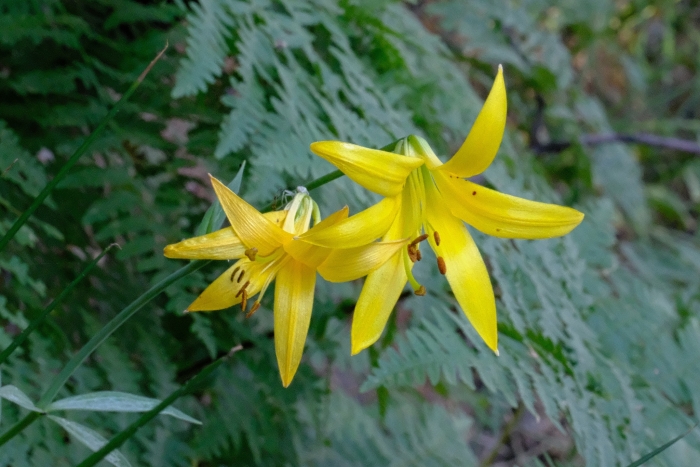Lemon Lily
(Lilium parryi)
Lemon Lily (Lilium parryi)
/
/

Madeleine Claire
CC BY 4.0
Image By:
Madeleine Claire
Recorded By:
Copyright:
CC BY 4.0
Copyright Notice:
Photo by: Madeleine Claire | License Type: CC BY 4.0 | License URL: http://creativecommons.org/licenses/by/4.0/ | Rights Holder: Madeleine Claire | Publisher: iNaturalist | Date Created: 2021-06-26T23:20Z |























Estimated Native Range
Summary
Lilium parryi, commonly known as Lemon Lily, is a deciduous perennial herb that is native to California, Arizona and Sonora, Mexico. It is a rare species, particularly valued for its strikingly large, bright lemon-yellow flowers. Lemon Lily typically grows to about 2 meters in height, emerging from a scaly, elongated bulb that can be up to 11 centimeters long. The plant’s inflorescence is a raceme that can bear up to 31 large, showy flowers. The trumpet-shaped, fragrant blooms have six curling tepals, each up to 11 centimeters long, and are occasionally marked with a few reddish spots. The flowering season usually occurs in early summer, and the flowers are highly attractive to pollinators such as bees and hummingbirds.
Lemon Lily is appreciated for its ornamental qualities, including its vibrant flowers and pleasant fragrance. It is often used in woodland gardens, naturalized areas, and near water features where its natural beauty can be showcased. While it prefers part shade, it can tolerate morning sun with adequate moisture. It requires medium amounts of water and thrives in soils with slow to medium drainage, ideally rich and loamy. Due to its rarity, it is not commonly found in cultivation, but when it is, it requires careful attention to mimic its native habitat conditions. Potential problems include susceptibility to lily beetle infestations and fungal diseases if not provided with proper air circulation and drainage.CC BY-SA 4.0
Lemon Lily is appreciated for its ornamental qualities, including its vibrant flowers and pleasant fragrance. It is often used in woodland gardens, naturalized areas, and near water features where its natural beauty can be showcased. While it prefers part shade, it can tolerate morning sun with adequate moisture. It requires medium amounts of water and thrives in soils with slow to medium drainage, ideally rich and loamy. Due to its rarity, it is not commonly found in cultivation, but when it is, it requires careful attention to mimic its native habitat conditions. Potential problems include susceptibility to lily beetle infestations and fungal diseases if not provided with proper air circulation and drainage.CC BY-SA 4.0
Plant Description
- Plant Type: Herb
- Height: 4-6 feet
- Width: 1-2 feet
- Growth Rate: Moderate
- Flower Color: Yellow
- Flowering Season: Fall, Summer
- Leaf Retention: Deciduous
Growth Requirements
- Sun: Part Shade
- Water: Medium
- Drainage: Slow, Medium
Common Uses
Bee Garden, Bird Garden, Butterfly Garden, Fragrant, Hummingbird Garden, Low Maintenance, Showy Flowers
Other Names
Common Names: Citronlilja
Scientific Names: , Lilium parryi, Lilium parryi var. kessleri,
GBIF Accepted Name: Lilium parryi S.Watson